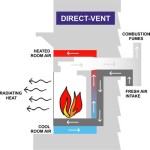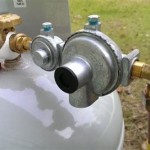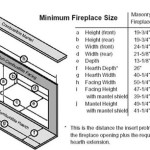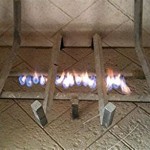Tile Fireplace Hearth: A Comprehensive Guide
The fireplace hearth, a fundamental element of any fireplace design, serves both functional and aesthetic purposes. It protects the surrounding flooring and walls from the heat and embers generated by a fire, while also contributing significantly to the overall visual appeal of the fireplace area. Among the various materials available for hearth construction, tile offers a compelling combination of durability, versatility, and aesthetic possibilities. This article provides a detailed exploration of tile fireplace hearths, examining their benefits, design considerations, installation processes, maintenance requirements, and different tile material options.
Advantages of Tile Fireplace Hearths
Selecting tile for a fireplace hearth presents several distinct advantages worth considering. These include heat resistance, design flexibility, ease of maintenance, and cost-effectiveness.
Heat Resistance: Fireplaces generate considerable heat, and the hearth must be able to withstand these temperatures without cracking, warping, or otherwise degrading. Tile, particularly ceramic, porcelain, and stone tiles, possesses excellent heat resistance. This is critical for preventing damage to the underlying subfloor and ensuring the hearth's structural integrity over time. Different tile materials have varying degrees of heat resistance. For instance, porcelain tile is generally more heat-resistant than ceramic tile. It is essential to consult with a tile professional or refer to manufacturer specifications to ensure the chosen tile is suitable for the intended fireplace application.
Design Flexibility: Tile is available in a vast array of colors, patterns, sizes, and textures, providing unparalleled design flexibility. This allows homeowners to select a tile that complements their existing decor, achieves a desired aesthetic (whether traditional, modern, rustic, or eclectic), and reflects their personal style. The modular nature of tile also facilitates the creation of intricate patterns and custom designs. From simple, solid-colored tiles to elaborate mosaic arrangements, the design possibilities are virtually limitless. This flexibility extends to the shape of the hearth itself, allowing for variations in size and configuration to suit the specific dimensions of the fireplace and surrounding room.
Ease of Maintenance: Compared to some other hearth materials, such as natural stone, tile is relatively easy to maintain. Most tile surfaces are non-porous or can be sealed to resist stains and spills. Regular cleaning with a mild detergent and water is typically sufficient to maintain the tile's appearance. Grout, the material that fills the spaces between tiles, can be more susceptible to staining. Therefore, it is essential to seal the grout properly and clean it regularly to prevent discoloration. Additionally, the durability of tile means it is resistant to scratches and chipping, further reducing the need for extensive maintenance or repairs.
Cost-Effectiveness: The cost of a tile fireplace hearth can vary depending on the type of tile selected, the size of the hearth, and the complexity of the installation. However, compared to some high-end materials, such as custom-cut stone slabs, tile can often be a more cost-effective option. A broad range of tile materials are available at different price points, allowing homeowners to find a suitable option that fits their budget. Furthermore, the durability and longevity of tile can translate to long-term cost savings by reducing the need for frequent repairs or replacements.
Key Considerations in Tile Hearth Design and Installation
Designing and installing a tile fireplace hearth involves careful planning and attention to detail. Several factors must be considered to ensure a safe, functional, and aesthetically pleasing result. These include subfloor preparation, tile selection, layout planning, and installation techniques.
Subfloor Preparation: The subfloor provides the foundation for the tile hearth, and its condition is critical to the hearth's stability and longevity. The subfloor must be level, structurally sound, and free from any debris or contaminants. If the subfloor is uneven or damaged, it may need to be repaired or replaced before the tile installation can begin. In some cases, a layer of cement board or backer board may be added to the subfloor to provide a smooth, stable, and fire-resistant surface for the tile. This is particularly important if the existing subfloor is made of a combustible material, such as wood. The cement board should be properly fastened to the subfloor with screws, and the seams should be taped and mudded to create a seamless surface. Proper subfloor preparation is essential to prevent cracks or other problems in the tile hearth over time.
Tile Selection and Material Considerations: As previously mentioned, a wide variety of tile materials are suitable for fireplace hearths, including ceramic, porcelain, natural stone (such as slate, granite, and marble), and even glass tile in certain applications. Each material has its unique characteristics in terms of heat resistance, durability, aesthetics, and cost. Porcelain tile is generally considered to be the most durable and heat-resistant option, making it a popular choice for fireplace hearths. Ceramic tile is a more affordable option but may not be as durable or heat-resistant as porcelain. Natural stone tiles offer a unique and luxurious look but can be more expensive and require more maintenance. When selecting tile, it's crucial to check the manufacturer's specifications to ensure that it is suitable for use in a fireplace application and can withstand the expected temperatures. Furthermore, the tile's slip resistance should be considered, especially if the hearth will be used as a seating area or if there is a risk of water or snow being tracked onto the surface. A tile with a textured surface or a slip-resistant finish can help to prevent accidents.
Layout Planning and Design: Before installing the tile, it is essential to plan the layout carefully. The layout should consider the size and shape of the hearth, the dimensions of the tile, and the desired pattern. A well-planned layout can minimize tile cuts and waste and create a more visually appealing result. It is also important to consider the grout lines, which can significantly impact the overall look of the hearth. Narrow grout lines create a more seamless appearance, while wider grout lines can add texture and visual interest. The grout color should also be carefully selected to complement the tile color and the overall design of the fireplace area. Before beginning the installation, it is recommended to lay out the tiles on the floor to visualize the finished product and make any necessary adjustments to the layout.
Installation Techniques and Mortar Selection: Proper installation techniques are crucial to ensure a durable and long-lasting tile hearth. The tile should be installed using a high-quality mortar that is specifically designed for use with the chosen tile material and the substrate. The mortar should be mixed according to the manufacturer's instructions and applied evenly to the back of the tile. The tile should then be pressed firmly into place, ensuring that it is level and properly aligned with the surrounding tiles. Spacers should be used to maintain consistent grout lines. After the mortar has cured, the grout can be applied. The grout should be carefully packed into the grout lines, and any excess grout should be wiped away with a damp sponge. The grout should then be sealed to protect it from stains and moisture. It is generally recommended to hire a professional tile installer to ensure that the installation is done correctly and to avoid any potential problems.
Tile Material Options for Fireplace Hearths
The selection of tile material is a critical decision, impacting both the aesthetic and functional characteristics of the fireplace hearth. Common choices include ceramic, porcelain, and natural stone, each offering a unique set of attributes.
Ceramic Tile: Ceramic tile is a popular and versatile option for fireplace hearths due to its affordability, wide range of colors and styles, and ease of maintenance. It is made from clay that is fired at high temperatures, resulting in a hard and durable surface. Ceramic tile is generally less expensive than porcelain or natural stone, making it a budget-friendly choice. However, it is typically less dense and less heat-resistant than porcelain tile, so it may not be the best option for high-heat applications. When selecting ceramic tile for a fireplace hearth, it is essential to choose a tile that is rated for high-temperature use and to follow the manufacturer's recommendations for installation and maintenance. Ceramic tile is available in a wide range of sizes, shapes, and finishes, allowing for a variety of design options. It can be used to create a traditional, modern, or rustic look, depending on the style of tile selected. Furthermore, the glazed surface of ceramic tile makes it resistant to stains and easy to clean.
Porcelain Tile: Porcelain tile is a denser and more durable type of ceramic tile that is made from finer clays and fired at higher temperatures. This results in a tile that is more resistant to heat, moisture, and wear, making it an excellent choice for fireplace hearths. Porcelain tile is also less porous than ceramic tile, which means it is less likely to absorb stains and spills. Porcelain tile is available in a variety of styles, including those that mimic the look of natural stone, wood, or concrete. This allows homeowners to achieve the desired aesthetic without the higher cost or maintenance requirements of natural materials. Porcelain tile is generally more expensive than ceramic tile, but its superior durability and heat resistance make it a worthwhile investment for a fireplace hearth. It is also available in large format tiles to minimize grout lines.
Natural Stone Tile: Natural stone tile, such as slate, granite, marble, and travertine, offers a unique and luxurious look for fireplace hearths. Each type of stone has its own distinct characteristics in terms of color, texture, and veining, creating a one-of-a-kind appearance. Natural stone tiles are durable and heat-resistant, making them suitable for fireplace applications. However, they are generally more expensive than ceramic or porcelain tile, and they require more maintenance. Natural stone tiles are porous and can be susceptible to staining, so they must be sealed properly and cleaned regularly. Some types of stone, such as marble, are also sensitive to acids and can be damaged by harsh cleaning products. Despite the higher cost and maintenance requirements, natural stone tile can add a touch of elegance and sophistication to any fireplace area. The varied textures and natural color variations can bring a rustic, refined, or modern feel depending on the type of stone selected.

How To Tile Over A Brick Hearth Shine Your Light

Fireplace Tiles Classique Floors Tile Portland Or

How To Tile A Fireplace Surround And Hearth Build Basic

How To Tile A Fireplace My Uncommon Slice Of Suburbia
/102661017-6a23c040b71843379188b96b21ac1a08.jpg?strip=all)
How To Tile A Fireplace

How To Remove Quarry Tile Level New Tiles

A Great Gray Hearth Ceramic Handmade Tiles

How To Tile Over A Brick Hearth Shine Your Light

Tile Inspiration For Fireplaces And Hearths The Otto House

How To Install A Marble Herringbone Fireplace Surround And Hearth
Related Posts








